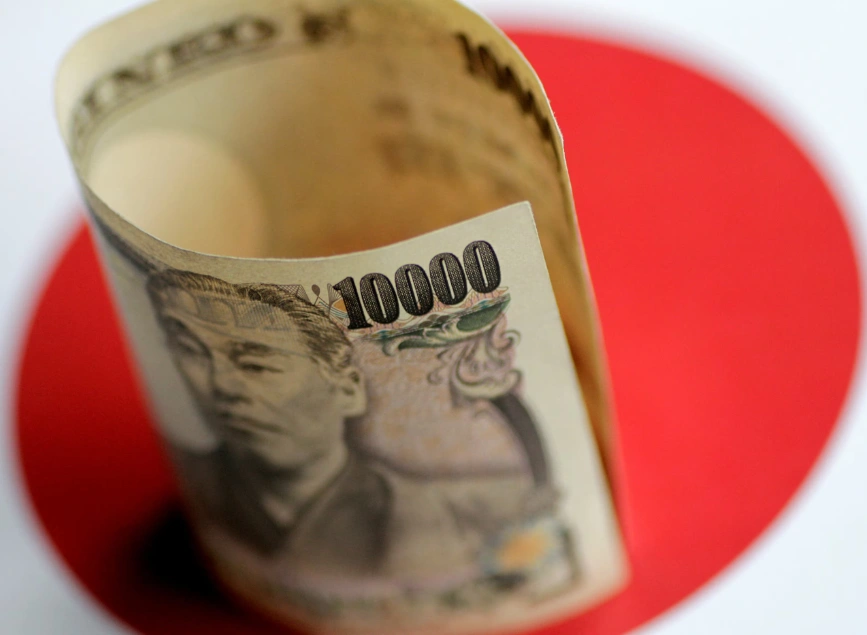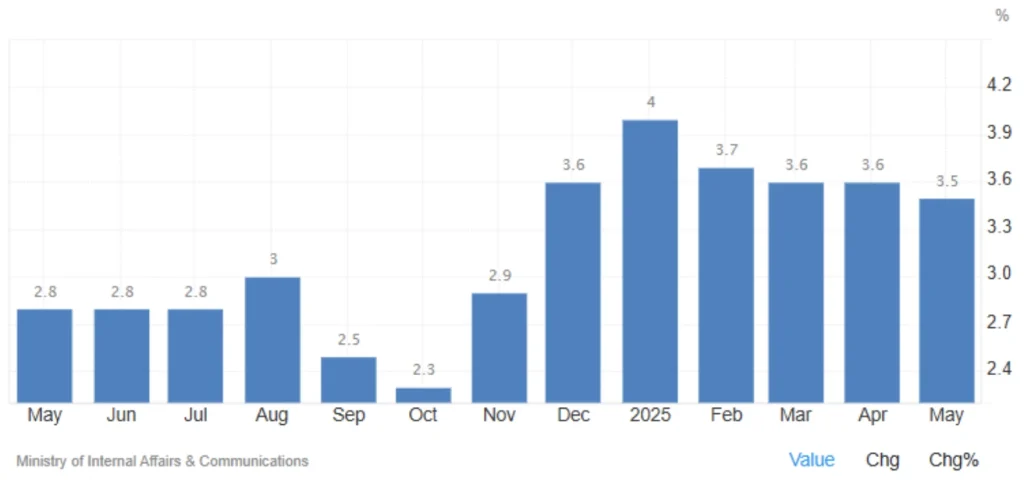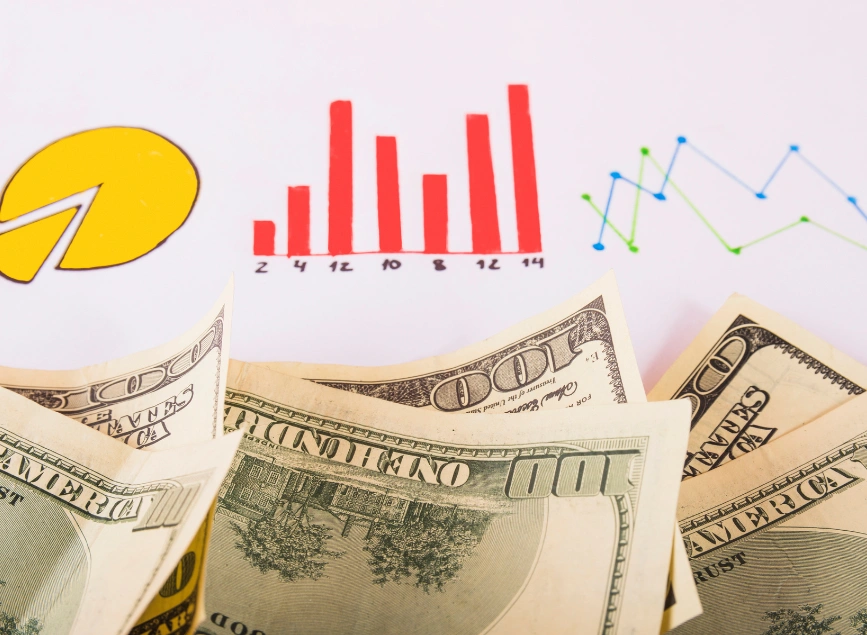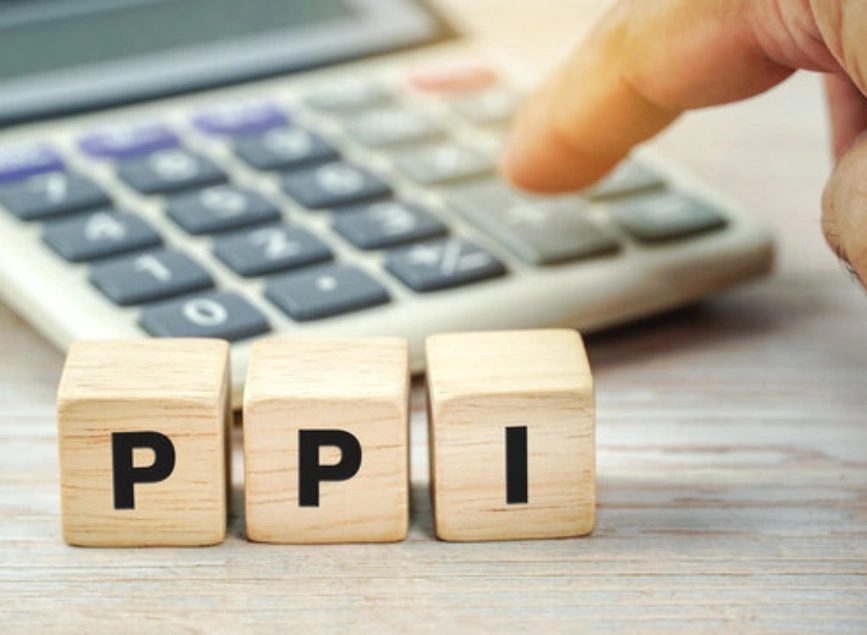
Japan’s Inflation Eases; Monetary Policy Outlook!
Key Inflation Statistics – May 2025In May 2025, Japan’s inflation eases, reflecting a shift in economic momentum.
| Indicator | Value | Notes |
|---|---|---|
| Annual Inflation Rate | 3.5% | Down from 3.6% last month, lowest since Nov 2024 |
| Core Inflation Rate | 3.7% | Up from 3.5% — highest in over 2 years |
| Monthly Inflation | 0.3% | Up from 0.1% in April |
| Food Inflation | 6.5% | Lowest in 4 months |
| Rice Price Increase | Over 100% YoY | Significant food price driver |
| Electricity Price | +11.3% | |
| Gas Price | +5.4% |
Inflation Overview
Japan’s annual inflation rate eased slightly to 3.5% in May 2025, marking the lowest level since November 2024. However, core inflation — which excludes volatile food and energy prices and is more closely watched by policymakers — rose to 3.7%, the highest in over two years. This divergence raises concerns about persistent inflationary pressures, especially ahead of the crucial summer elections.
Market Reaction to Japan’s Inflation Data
| Market | Initial Reaction |
|---|---|
| 💴 Japanese Yen | Mild strengthening due to rising core inflation |
| 📉 Nikkei Stock Index | Slight decline on fears of continued tightening monetary policy |
| 🏦 Japanese Bonds | Yield increases, particularly in medium-term maturities |
| 🪙 Cryptocurrencies | No significant reaction to domestic inflation data |
| 🟡 Gold | Minor support as safe-haven amid stable global inflation |
Educational Corner: Core Inflation vs. Overall Inflation
- Consumer Price Index (CPI): Measures the annual change in prices of a broad basket of consumer goods and services; critical for monetary policy decisions.
- Core CPI: Excludes highly volatile categories like energy and food to provide a clearer picture of underlying inflation trends.
Example: If rice and gas prices spike due to external crises, CPI rises sharply, but Core CPI may remain steady, reflecting less volatile inflation.
Read More: Japan’s Trade Surplus Reaches ¥544 Billion
Analysis: Market & Monetary Policy Implications

Recent inflation data present a mixed picture for Japan’s economic outlook:
- While headline inflation has softened, the rise in core inflation could pressure the Bank of Japan (BoJ) to maintain or intensify its tightening stance.
- Forex Market: Rising core inflation increases the likelihood of tighter monetary policy, supporting the Japanese yen against the dollar and euro.
- Stock Market: Faster-than-expected rate hikes or reduced bond purchases by the BoJ could weigh on equities.
- Gold & Commodities: Growing inflation expectations in major economies, including Japan, may increase demand for gold as a safe haven.
- Cryptocurrencies: Typically less sensitive to BoJ policy, but global inflation concerns can enhance appeal for inflation-hedged assets like Bitcoin.
Summary: The BoJ’s Difficult Path Amid Elections and Inflation Pressures
- The slight drop in headline inflation offers some relief to Japanese consumers.
- However, the climb in core inflation to a two-year high represents a significant challenge for policymakers, especially with summer elections approaching.
- The BoJ may need to accelerate bond-buying tapering or even consider earlier rate hikes.
- Short-term outlook: Likely yen strengthening and rising bond yields.
- Medium-term outlook: Interest rate trajectory depends heavily on core inflation persistence and labor market responses.
Share
Hot topics

Will 2026 Be a Turning Point for Crypto Regulation in the U.S.?
The cryptocurrency world is gearing up for a transformative year as a pro-crypto administration, led by Donald Trump, prepares to take charge in the United States. With a Congress expected...
Read more




Submit comment
Your email address will not be published. Required fields are marked *